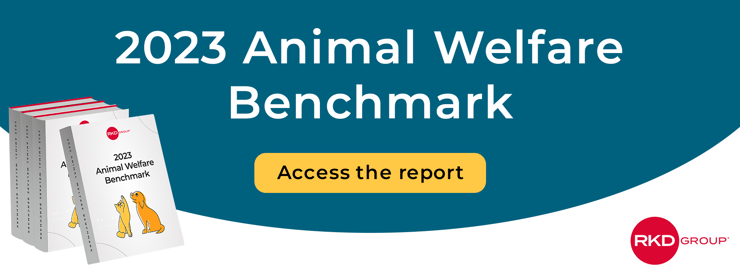As I shared in my 2023 Animal Welfare Benchmark blog, there’s a shift in mindset happening among animal welfare fundraisers and organizations.
Over the last few decades, fundraising materials have told the stories of rescues, rehabilitations and rehomes. Now, it’s time to tell the rest of the story of how animal welfare organizations impact and better their communities.
We all know that animal welfare organizations do so much more than rescue and shelter animals. Unfortunately, many donors do not.
In the last few years, we’ve been working alongside our animal welfare partners to test the messaging to help fill the funding gap, motivate donors to give to programs supporting pet owners and address any challenges along the way.
Getting animal lovers to give to people
The biggest barrier to this shift in messaging is motivating animal lovers to give to programs supporting other people’s pets. For over a century, donors have given directly to the most "urgent causes"—and saving lives is always more urgent than keeping an animal in a home.
Over the years, fundraising has relied on stories of pets who need to be rescued and sheltered to drive donations. But to help support the other programs animal welfare organizations provide to the community and to address the shift in mindset happening within, we have to tell more of the story.
In order to get donors to give to programs that keep animals in homes, we have to help them understand that it’s more cost-effective and beneficial long-term for animal welfare organizations to help people keep their animals than it is to rescue, shelter and arrange adoptions.
If we can get donors to sympathize with pet owners, like a disabled veteran whose pet means everything to him or a family whose mom is sick and needs support, we can make strides to shift their mindsets.
It starts with education
Animal welfare organizations do more than house homeless animals—in many cases, they provide education, veterinary services, food, boarding and many more resources. However, fundraising appeals as the only means of educating your donors will not be successful.
To see success, animal welfare organizations must work to push educational content showing your organization’s impact on the community across as many avenues and to as many audiences as possible.
The key to helping donors understand this shift is through your messaging. Look across your audiences and channels for ways to enlighten people about the good work you do in your community. This could include:
- Meeting with major donors to tell them about your programs that need support
- Reaching mid-level groups through targeted events
- Telling the story of an animal who was able to stay in their home through newsletters, an email or direct mail appeal
And that’s just to name a few.
It’s about more than just a single email or direct mail piece. It’s about guiding the conversation, changing your narrative and helping donors understand the impact your organization has on your community outside of sheltering and rescuing.
While this shift isn’t something that can happen overnight, it will have a lasting impact on the donors who support your cause. Not only will they support the animals they love—they'll also be more willing to give to the many programs that have an impact on your community.






Leave a comment: